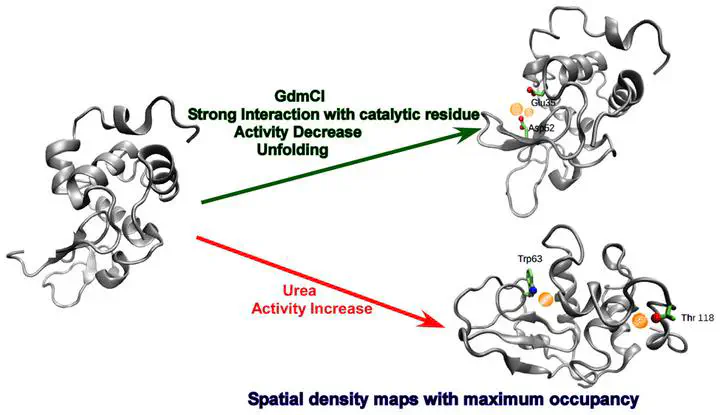Contrasting Effects of Guanidinium Chloride and Urea on the Activity and Unfolding of Lysozyme
 Image credit: G. Reddy
Image credit: G. Reddy
Abstract
Cosolvents play an important role in regulating the stability and function of proteins present in the cell. We studied the role of cosolvents, urea and guanidinium chloride (GdmCl), which act as protein denaturants, in the catalytic activity and structural stability of the protein lysozyme using activity measurements, spectroscopy, and molecular dynamics simulations. We find that the activity of lysozyme increases on the addition of urea, whereas it decreases sharply on the addition of GdmCl. At low GdmCl concentrations ([GdmCl] < 4 M), the activity of lysozyme decreases, even though there is no significant perturbation in the structure of the lysozyme folded state. We find that this is due to the strong interaction of the Gdm+ ion with the residues Asp52 and Glu35, which are present in the lysozyme catalytic site. In contrast, urea interacts with Trp63 present in the loop region present near the active site of lysozyme, inducing minor conformational changes in lysozyme, which can increase the activity of lysozyme. At higher denaturant concentrations, experiments show that GdmCl completely denatures the protein, whereas the folded state is stable in the presence of urea. We further show that GdmCl denatures lysozyme with the disulfide bonds intact in the protein, whereas urea denatures the protein only when the disulfide bonds are broken using reducing agents.